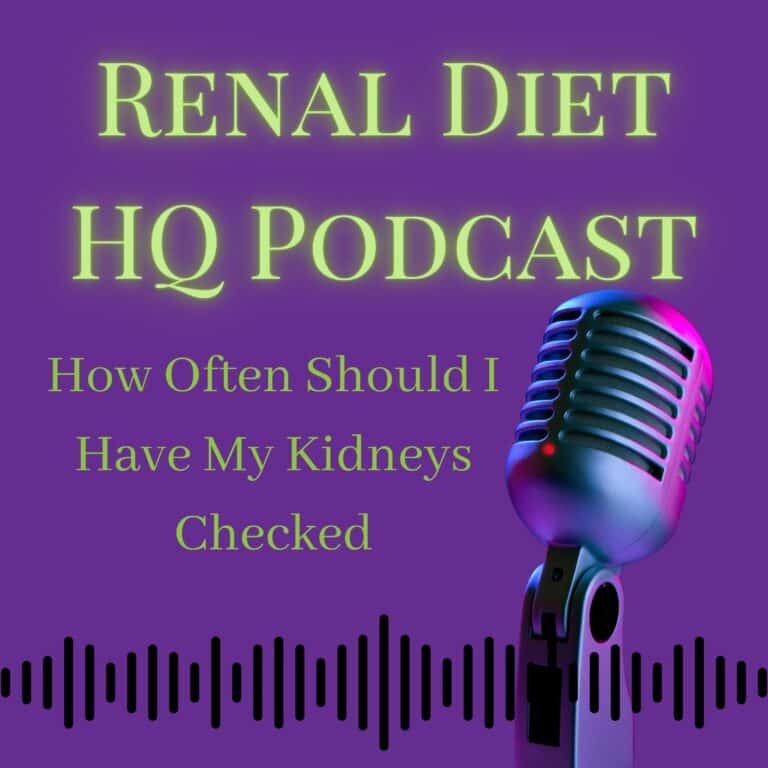Should I Eat White Bread Or Wheat Bread On A Kidney Diet-Podcast
Podcast: Play in new window | Download

When you're on a kidney diet, making informed food choices is crucial. One common question is whether to choose white bread or whole grain bread. Both have pros and cons, but understanding their nutritional differences can help you make the best decision for your health.
For More Recipes and Ideas --->> Get Your Free Meals and Recipes That Are Perfect for Pre-Dialysis Diets, Pre-Dialysis with Diabetes, or Dialysis Diets.
Nutritional Comparison of White and Whole Wheat Bread
White Bread Benefits
White bread is often a preferred option for those on a kidney diet because it contains less potassium and phosphorus compared to whole grain bread. The type of flour used impacts the amount of potassium, but most white bread varieties are safe for kidney patients. Additionally, some white bread is enriched with nutrients like calcium and vitamin D, which support bone health, an essential factor when avoiding dairy-based foods. There are even brands that offer white bread with reduced carbohydrate content and improved texture, making it enjoyable to eat.
Whole Wheat Bread Benefits
Whole wheat bread comes with a higher nutritional profile, including more fiber, which aids digestion, helps control blood sugar levels, and lowers cholesterol. It is also packed with essential vitamins and minerals such as iron and magnesium. However, whole wheat bread has more potassium and phosphorus, so it's vital to monitor these minerals based on your specific dietary needs and doctor's recommendations. For kidney patients without restrictions on potassium or phosphorus, whole wheat bread can be a healthier choice.
Understanding Potassium and Phosphorus in Bread
Why These Nutrients Matter
Potassium and phosphorus play significant roles in kidney health. As kidney function decreases, managing these minerals becomes increasingly important. High levels can lead to complications, especially for dialysis patients or those in advanced stages of chronic kidney disease (CKD).
Whole Wheat Bread Caution
Whole wheat and other whole grain breads naturally contain more potassium and phosphorus than white bread. This is why patients with CKD need to pay close attention to their lab results and follow their healthcare provider's advice on nutrient intake.
Making Informed Choices: Nutrition Labels and Ingredient Awareness
Key Points to Check
Reading nutrition labels is essential when selecting bread for a kidney diet. Look for important nutritional values such as sodium, potassium, phosphorus, and added ingredients. Avoid options that contain phosphorus additives like disodium phosphate, as these can increase phosphorus levels in your diet.
Fiber Content Indicator
Not all brown bread is whole wheat. To ensure you're getting whole wheat, check that the label mentions at least 1-2 grams of fiber per slice. If the fiber content is lower, the bread may be more similar to white bread in nutritional value.
Alternatives and Serving Recommendations for CKD
Alternative Breads
If you're looking for variety, sourdough bread can be a suitable alternative when consumed in moderation. It provides different flavors and nutritional benefits that may complement a kidney-friendly diet.
Recommended Servings
The typical recommendation for CKD patients is six to eight servings of grains or grain products per day. Choosing whole grains when possible is beneficial, as they provide fiber, B vitamins, and minerals that support overall health, blood sugar control, and reduced heart disease risk.
Special Considerations for CKD and Diabetes
If you have both CKD and diabetes, it’s essential to reduce the intake of refined grains like white bread, pasta, and rice. Whole grains can help stabilize blood sugar and support better daily nutrition.
Can You Make Low-Sodium Bread at Home?
Home Baking Insight
If you enjoy baking your own bread, you might wonder about reducing salt content. While salt is an important component in bread for enhancing flavor and regulating the yeast fermentation process, it is possible to bake bread with less salt. Just be cautious: using no salt at all can make bread dense and less flavorful.
Final Thoughts: Balancing Nutrition and Preference
White Bread
White bread can be a practical option for kidney patients who need to monitor potassium and phosphorus levels. Its low content of these minerals, paired with mindful portion control, can make it part of a balanced kidney-friendly diet.
Whole Wheat Bread
For those without potassium or phosphorus restrictions, whole wheat bread is generally the better choice due to its fiber content and higher nutritional value. It supports digestion, blood sugar control, and heart health.
Regardless of the type of bread you choose, always read the nutrition labels carefully and consult with a dietitian to ensure your choice fits your specific health needs.
Choosing the best bread for a kidney diet depends on your individual nutritional requirements and preferences. Both white and whole wheat bread can be part of a healthy, kidney-friendly diet when consumed in moderation and with mindful attention to nutritional content. Always check labels and work with your healthcare provider to make the best choices for your long-term health.
Learn more about Friendly Desserts Satisfying your sweet tooth without compromising your health-Podcast
Listen to our podcast about sample meal plans for kidney disease or about Holiday Eating Tips for Dialysis Podcast
Learn more Importance of Fiber in CKD Diets: Why fiber matters and how to get enough-Podcast










